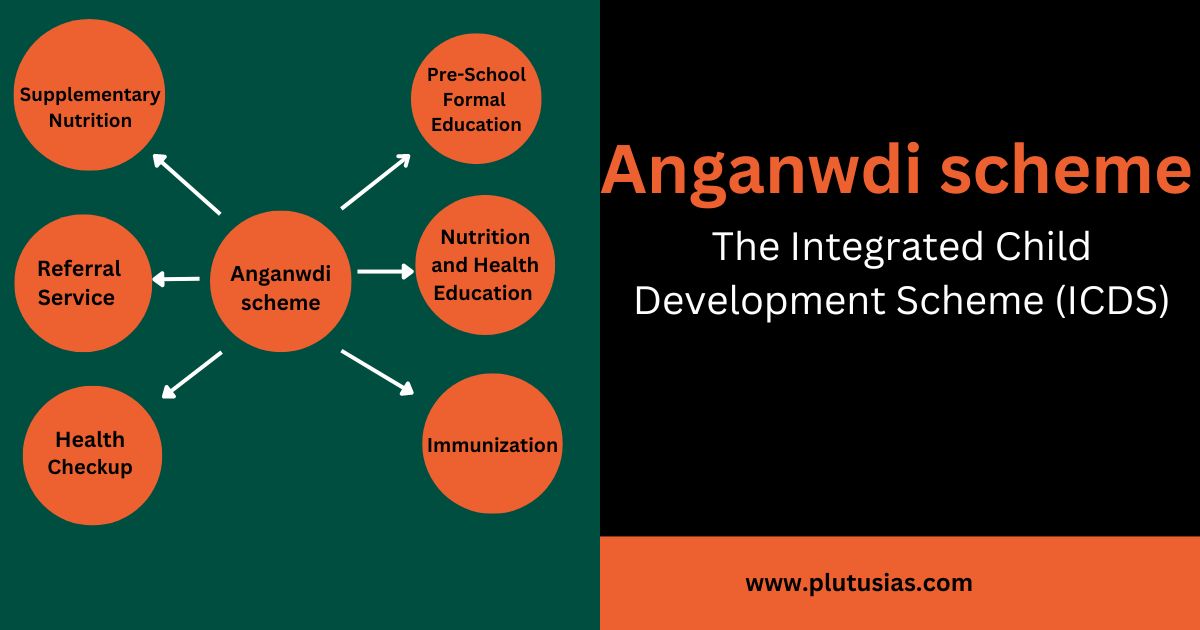24 Aug Anganwadi Scheme
Anganwadi Scheme
The article talks about how the Anganwadi Scheme impacts Social Development.
Why in news?
The Anganwadi service scheme, created to assist children under the age of six, has not yet reached its full potential.
The Integrated Child Development Scheme (ICDS)
- One of the Government of India’s major programmes, the initiative was introduced on October 2, 1975.
- It stands for one of the biggest and most distinctive early childhood care and development programmes in the entire globe.
- It is the most important representation of the nation’s dedication to its children and nursing moms.
- The programme is a solution to the conflict between stopping the cycle of hunger, illness, diminished learning capacity, and mortality on the one hand and providing non-formal preschool education on the other.
- The Scheme’s beneficiaries include pregnant women, breastfeeding mothers, and children between the ages of 0 and 6.
- The government’s Integrated Child Development Scheme (ICDS), which serves approximately 30 million children in the age range of 3-6 in 1.3 million centres nationwide, includes the Anganwadi system.

Anganwadi Scheme
What role do parents play in the Anganwadi Scheme?
- Parents are frequently referred to in ICDS reports as beneficiaries, passive recipients of rations, immunisation clinics, and more recently, schooling.
- Parents, on the other hand, do not see themselves or their kids in this way.
- For them, education is a method to achieve their goals and a route to social mobility so that their offspring can benefit from the possibilities they didn’t get.
- Primary enrollment rates above 90% are a direct result of parents believing that education provides prospects for a better life.
- needs for their kids’ math, writing, and English language abilities.
- It’s simple to accomplish this.
- introducing young children to the English language in a comfortable, age-appropriate manner
- The greatest method to become fluent in any other language is to realise that it is the language that is spoken at home.
- A fantastic technique to encourage fine motor skills and future writing is to give them a pencil to scribble with for a few minutes each day, obviously without making them write letters and numbers constantly.
- By showing the wonder of math through enjoyable tasks like estimating, comparison, sorting, and seriation, math might be made simple.
- This lessens their aversion to arithmetic and the paralysis by analysis that prevents them from succeeding in STEM fields.
Way Forward
- Anganwadi centres might adhere to regular daily schedules that divide time between teacher-led and self-directed activities aimed at fostering the development of cognitive, literacy, and numeracy abilities.
- They can also have frequent Shiksha Choupals (parent-teacher gatherings) to show the parent community what learning is taking place in the Anganwadi and to increase their confidence in this organisation.
- In the next five years, it will be critical to launching a widespread awareness campaign about age-appropriate ECCE that includes parents as stakeholders.
- To activate Anganwadi 2.0 in the ECCE ecosystem, it is vital to embrace the power of “abhibhavaak-bhagidari” (parent participation).
Download the PDF Now:
Plutus IAS current affairs eng med 24th August 2022
Source:
Daily Current Affairs for UPSC
Read the best daily current affairs for the UPSC examination from Plutus IAS. The aspirants get the latest current Affairs related to sociology optional on our site.
Also, read weekly and monthly Current affairs for IAS exam preparation.



No Comments